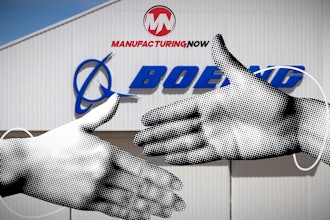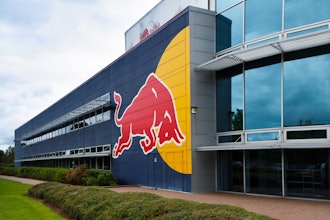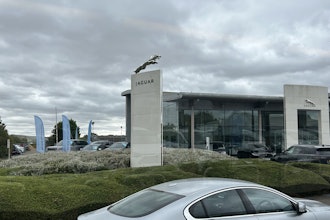
 Guneet Bedi, General Manager Americas at relayr.
Guneet Bedi, General Manager Americas at relayr.When it’s implemented wisely, the Industrial Internet of Things (IIoT) enables unprecedented opportunities for businesses. Across several industries, these connected data-analytics solutions are providing new insights into business operations, predicting problems before they occur, unlocking new revenue possibilities and identifying previously unexplored opportunities for improvement.
At the heart of the IIoT revolution is, of course, technology. It takes a symphony of sensors, cloud services, data-analytics applications, wireless capabilities, edge-computing systems and user experiences to transform raw data into actionable insights and outcomes. However, one of the biggest barriers to IIoT success is thinking of it as a purely technological challenge. Instead, it’s a business transformation that requires input and guidance from several different parts of your organization.
In fact, one of the most beautiful things about the IIoT is that it can be customized to your organization’s very own specifications. Your key decision-makers can define what the key insights should be, whether legacy equipment should be retrofitted with modern modules, and which processes can benefit from it. That means no two IIoT deployments are identical -- and it also means that there’s no such thing as a one-size-fits-all IIoT solution.
Despite differences in the details of every deployment, many organizations run into similar barriers when planning an IIoT rollout. Here are a few of the most common hurdles cited across several industries, as well as the ways your organization can avoid them with ease.
Don’t Worry About the Upfront Investment -- but do Minimize Risk
Many companies give up on an IIoT deployment before it even begins. An implementation may involve thousands of devices in multiple locations, and the costs associated with upgrading all the equipment, connectivity options, security requirements and software can stop a project dead in its tracks.
However, upfront investments can be kept surprisingly modest. Organizations can opt to pay as they grow into their IIoT deployment by investing in a modular, scalable solution. In fact, companies that rely on specialized legacy equipment—equipment that is usually difficult and expensive to replace—can bring it into the digital era through retrofitting.
Add-on sensors and communication modules can extend the useful lifespan of the equipment you already have. And with the right AI- and algorithm-driven predictive analytics applications, your organization can even reduce future costs in maintaining, upgrading and replacing that legacy equipment.
The right integration partner can help your company avoid the mistake of viewing an IIoT implementation as a “technology-only” strategy, helping you solve business problems more holistically. This should be the ultimate goal for every entrepreneur in a nascent market.
What’s more, the right integration partner can also help you minimize risk. Some integration partners offer IoT insurance services that protect or guarantee a company’s return on investment from an IIoT deployment.
Don’t Depend Solely on the Cloud
There is a lot of cool technology involved in the IIoT, so let’s geek out for a minute. The IoT devices in our homes rely heavily on the cloud for processor-intensive tasks. Dependence on the cloud makes sense in that context, as a simple connected speaker or smart thermostat represents a light data load, and a few seconds of latency is acceptable.
But in an industrial use case, reduced latency becomes much more important. Business-critical decisions -- and in the case of heavy manufacturing equipment and automotive applications, often life-or-death decisions -- need to be made instantly. Furthermore, industrial devices generate so much data that sending it to the cloud in real-time would create mind-boggling data costs. And not all that data is mission-critical. With hundreds to thousands of data nodes, offloading every bit of data to the cloud is sheer data pollution.
Considering the key business objectives of low cost and low latency, processing data on-site makes much more sense in the industrial world. Edge computing can help reduce data loads and run AI and business rules on-site so you’re not dependent on the cloud. What’s more, edge computing helps eliminate some of the privacy and security concerns of operating a constantly connected, cloud-dependent infrastructure.
It’s no coincidence that edge computing is building serious buzz in the world of IIoT: Google recently announced its Cloud IoT Edge platform, which helps bring data processing and machine learning on-site rather than wholly in the cloud. The right integration partner will understand the benefits of edge computing, and they will have extensive partnerships with key hardware players in the space.
Technical Success Doesn’t Translate to Business Success
As I mentioned before, every IIoT deployment should begin with a business question rather than a tech question: What business problems do you want to solve? The answer to that question will involve input from a wide array of stakeholders, from the C-suite to the key business decision-makers to the sales and marketing teams.
Of course, the IT department and the engineering team are also essential, but clear business direction and primary business needs should be the driving force. After all, the technological solutions implemented in any organization are only relevant if they solve real business problems.
Neglecting to involve all the right stakeholders at the early stages of an IIoT deployment can lead to serious problems down the line. A recent Cisco survey revealed that while many IT departments have considered their IIoT deployments to be a success, business decision-makers at the same companies have been less pleased. This suggests that the desired business outcomes of these deployments were not adequately defined before the projects began.
It’s also essential to have the right level of management support and investment. Stakeholders must understand that an IIoT deployment isn’t just a product, it’s a journey. It’s an exploration of finding out the ways IoT can help you. Much like an extensive home-renovation project, it can unfold rewardingly over time.
Guneet Bedi is General Manager Americas at relayr.






















